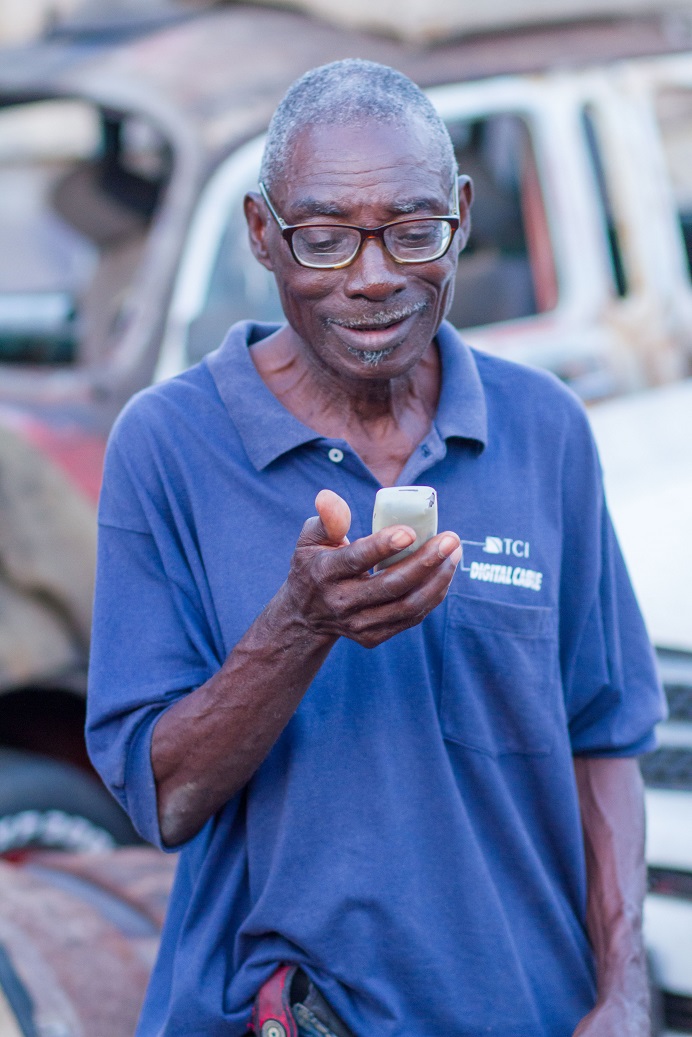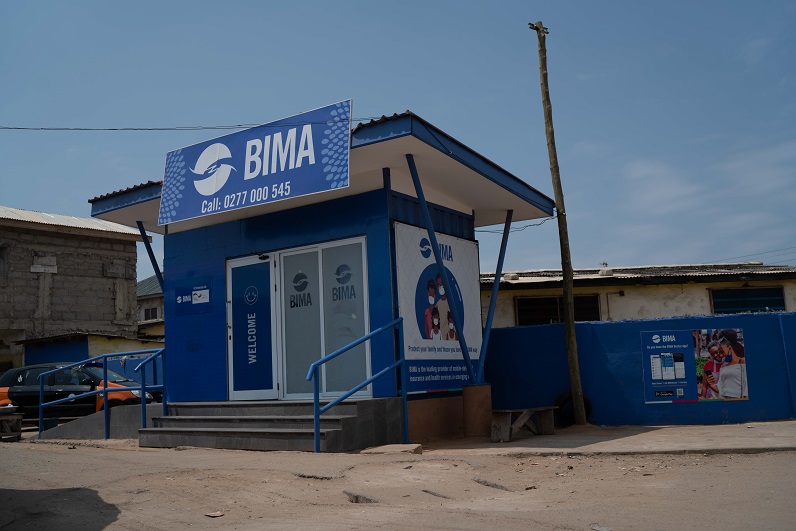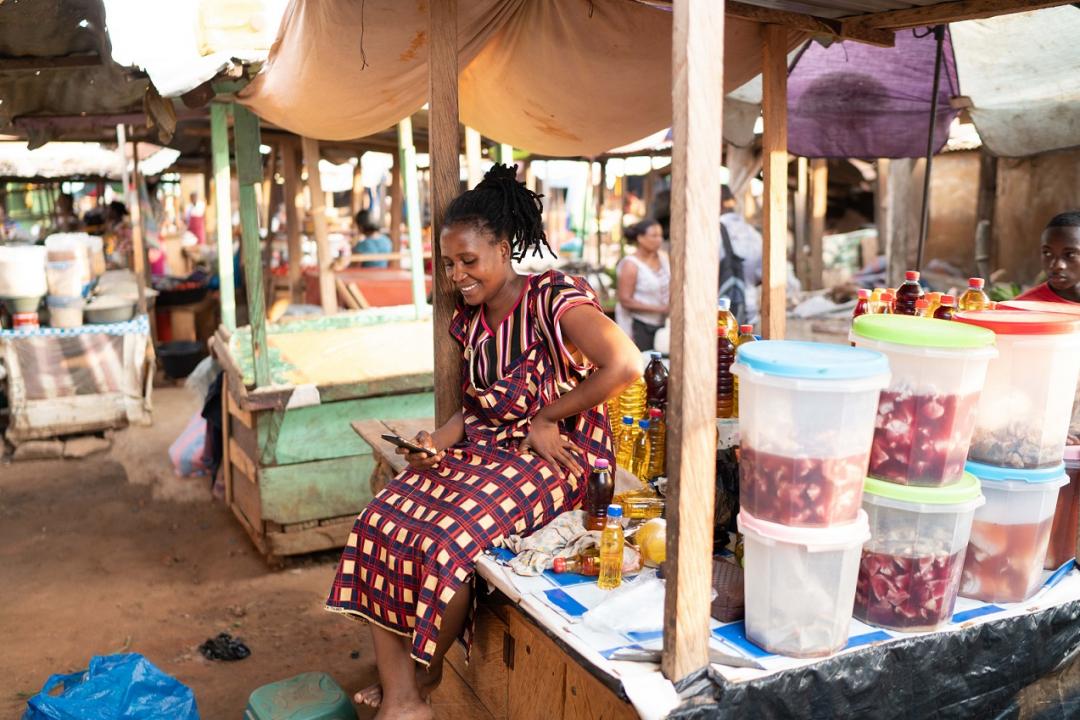Health insurance for the underserved: Experiences from a public-private partnership in Ghana
In Ghana, almost 25 per cent of the population live below the national poverty line, and many of these people lack adequate financial health strategies. The SAGABI partnership (GIZ, Allianz, BIMA) uses mobile channels to increase access to insurance and health services for these low-income consumers.
Why do many Ghanaians lack health insurance?
It’s a question of firstly, “What services do I get for what I pay”, secondly, “Am I aware of it in the first place,” and thirdly, “Can I afford this?”
Ghana's National Health Insurance System (NHIS) covers about 40 per cent of the population, but the system is stretched: Health facilities and healthcare professionals are limited across the country. This means that many people either travel significant distances to access help or even go without. Especially in rural areas where traditional African medicine is still used, healthcare facilities are particularly hard to access.
A lack of health and financial literacy among our target group also challenges the uptake of health insurance. The concept of insurance products is often hard to grasp, as you hope never to be exposed to their most obvious benefits. It is all about trust – very different to a credit or saving product.
There are also several technical reasons directly related to the quality and service of insurance provision. These include:
- Health services are expensive.
- Insurance is normally offered as stand-alone product, which makes it difficult for customers to appreciate its value.
- Traditional delivery channels, especially for microinsurance products, often do not provide the reach you need to offer valuable services for an affordable price.
- Agents work on commission. With (starting from) a price of 0,72c/€ per month for an insurance policy, you can imagine that a commission is not high, but consumes up to 70 per cent of the product costs. To add responsible selling techniques and adequate control systems has been beyond reality.
- Modern delivery channels, such as mobile delivered insurance, have limited touchpoints with customers. This hampers trust and engagement.
- That leads to a very high customer churn.
… I could go on….

How did SAGABI tackle these challenges? What’s special about its approach?
To tackle these challenges, the partnership between GIZ, Allianz and BIMA (SAGABI) under the Developpp.de program of the German Federal Ministry for Economic Cooperation and Development (BMZ) wanted to reshape the customer journey and offer a compelling value proposition. The idea was to move towards a holistic individual health management.
Building upon BIMA’s existing health insurance policy in Ghana, this New Customer Journey tested new approaches for mobile-delivered insurance by combining face-to face and digital engagements. It combined the best of two worlds to enhance customer awareness and trust, improve customer engagement, decrease costs on all sides, inform data-driven decision-making, and ultimately decrease customer churn.

This New Customer Journey was initiated by a white-labeled awareness campaign, both online and offline, that reached more than 1.5 million people. The New Customer Journey further included…
- physical experience centers where interested people and customers could clarify open questions with BIMA agents. This substantially increased visibility of and trust in the company.
- a smartphone app for sales agents to register and manage customers in a responsible manner. The app increased the productivity of agents by more than 30 per cent.
- personalized digital onboarding messages and digital health programmes via various channels (WhatsApp, IVR, SMS). The latter resulted in 64 per cent of the customers improving their health practices.
- teledoctor services, hospitalization support and quick claims payout (core services of BIMA already prior to SAGABI).
- personalized digital communication to inform health practices after illnesses and keep customers engaged.
More than 100,000 customers entered this New Customer Journey, and due to this new approach combining digital channels and in-person engagements, customer churn decreased from 13.4 per cent to 3.3 per cent. More insights on this partnership can be found in this report, as well as in all the factsheets and InFocus documents on this MiN database.

How can health insurance for underserved communities become financially viable, both for companies and customers?
Offering services that go beyond the insurance product itself, such as health programmes, teledoctor services, personalized messages or experience centers, can greatly enhance the value of health insurance for customers. These services are also beneficial for companies in the medium and long run, as they improve health outcomes of customers, reduce the number of physical visits at a doctor or hospital, and thus reduce claims. They also increase retention due to higher customer trust, engagement, and satisfaction.
Moreover, digital solutions like a smartphone app for sales agents or digital claims processing greatly reduce the costs borne by the company. Consequently, they can reduce the premium for customers and make insurance more affordable also for underserved and low-income communities.
Thus, the benefit-cost ratio can be improved significantly through “mass personalized”, value-added services and digital solutions.
How did you reach customers without access to digital devices, or with low digital literacy?
The white-labeled awareness campaign of the local insurance industry was conducted both digitally and in-person. Particularly on-the-ground, in-person awareness raising helped reach less-literate target groups that do not have access to the internet and smartphones. Our post-campaign research, however, showed that this target group had also heard about mobile-delivered insurance from the campaign on TV or from friends and family that had seen the campaign on social media. Moreover, the very active online interaction also indicated that more customers may have internet access than initially predicted.
Besides the awareness campaign, the experience centers also enabled less-literate people to get informed and receive assistance by BIMA agents in, for instance, claims filling.
The customer communication channels also did not exclude this target group. Based on an extensive customer research conducted at the beginning of the project as well as questions in the registration process of each customer, a personalized communication channel was agreed upon with each customer. Besides WhatsApp, possible channels included SMS and Interactive-Voice-Response (IVR) for customers without access to digital devices or low (digital) literacy. We could therefore and through separate technical systems include new clients with smart or feature phones.

Did SAGABI also cooperate with physical medical facilities to improve healthcare and health advice?
SAGABI did not cooperate with physical medical facilities in Ghana. The project was rather small and a cooperation with public facilities would have been another animal, in all aspects. However, we helped people to stay well without needing to access physical health facilities by providing i) information that would allow and encourage healthy behaviors, and ii) teledoctor services. The latter were offered by experienced doctors covering all languages spoken in Ghana, with the license to subscribe electronical prescriptions. For clients without smartphones, the experience centers offered private spaces for video calls.
Concerning the health programmes, country statistics were used to base the content areas for the health programmes (Stay Healthy; Nutrition & Diet; Women’s Health; Diabetes & Hypertension) on common health issues of the Ghanaian population. Moreover, SAGABI used the expertise of medical practitioners to improve health content messages that were sent to the customers in order to promote individual health risk management. As a result, 64 per cent of BIMA customers changed their health practices and fewer claims were submitted.
What key recommendations do you have for inclusive business companies trying to operate in the Ghanaian health insurance market?
Since people’s problems and concerns are often interrelated and complex, it is not sufficient to provide insurance as a stand-alone product. Instead, it is necessary to apply a holistic approach that increases trust, understanding and engagement of low-income customers.
The New Customer Journey used a hybrid approach designed to let customers shape the services around their needs and pain points and help them make informed decisions about their health and finances. At the first interaction, in-person engagement with sales agents is important to increase trust in the company and understanding of the product. For this, visibility in the market is important.
After this first interaction, providers must look for ways to continue engagement with their customers in a way that is sustainable and does not require ongoing in-person contact. For this reason, SAGABI implemented, for instance, the digital educational health programmes in BIMA’s service, leading to a greater perception of value as well as trust-building for the first six months after signing up.
Understanding which channels and what types of messages are most effective is also necessary for providers to reach customers without overwhelming them or losing their interest. Consequently, SAGABI improved services and delivery methods by active listening, establishing feedback loops with customers, and analyzing gathered data to increase personalization and tailor messages to individual customers.
